Do you have a question about the Visonic PowerMaster-10 G2 and is the answer not in the manual?
Lists and describes the PowerMaster features and how to configure them.
Details on opening the control panel and mounting the bracket.
Instructions for connecting the telephone line to the control panel.
Guidance on system planning and initial programming steps.
Steps for installing the optional GSM module.
Instructions for installing the PGM-5 output interface module.
Procedure for adding wired zones and PGM devices.
Steps for connecting AC power to the control panel.
Details on powering up the control panel, including backup battery.
Final steps for closing and securing the control panel.
Diagram illustrating the wiring connections for the PowerMaster-30 G2.
Steps for opening the panel and mounting the bracket.
Instructions for connecting the telephone line.
Procedure for connecting wired zones and sirens.
Guidance for system planning and programming.
Steps for installing the optional GSM module.
Instructions for mounting the DUAL RS-232 module.
Instructions for installing the PGM-5 module.
Details on installing the optional Expander module.
Procedure for connecting power to the control panel.
Steps for inserting the backup battery pack.
Guidance on supplying power to the unit, including backup.
Final steps for closing and securing the control panel.
Overview of installer programming and system customization.
Explanation of keypad buttons for navigation and configuration.
Description of sounds used for system feedback.
Procedure to enter installer mode and select menu options.
Method to enter installer mode when user permission is required.
Guidance on selecting options within menus.
Steps to exit the installer mode.
Configuration of Master Installer, Installer, and Guard codes.
Guidance on handling identical installer and master installer codes.
Management of system zones and connected devices.
Overview of zone and device management options.
Procedure for enrolling and configuring new devices.
Steps to delete devices from the system.
Procedure to review or modify existing device parameters.
How to replace a faulty device with a new one.
Setting default parameters for new device enrollments.
Enabling and configuring the Soak Test mode for zones.
Process of updating device configurations after exiting installer mode.
Configuration options for the control panel's operation.
Overview of control panel configuration menus and options.
Setting arming, disarming, exit, and entry delay parameters.
Customizing zone behavior like cross-zoning and swinger stop.
Configuring alarm and trouble event handling and reporting.
Settings for the panel's built-in and external sirens.
Customizing audible beeps and visual display feedback.
Settings for detecting and reporting jamming and missing devices.
Configuration for various other system features.
Configuration of communication channels and reporting methods.
Overview of communication settings and menu structure.
Settings for the PSTN telephone line connection.
Configuration for cellular communication via GSM, GPRS, or SMS.
Defining how events are reported to monitoring stations.
Configuration for reporting events to private telephone subscribers.
Setting up motion cameras for visual alarm verification.
Managing remote access and programming permissions.
Configuration for the Broadband/IP communicator module.
Configuration of programmable output (PGM) functions.
Overview of PGM output configuration.
Technical details on open collector output states.
Defining factors that determine PGM output.
Setting daytime limits for PGM device operation.
Details on configuring PGM output behavior for various events.
Options for customizing zone names and speech messages.
Procedure for defining custom names for zones.
Instructions for recording speech messages for the system.
Setting the mode for two-way voice communication.
Tools for testing system operation and device status.
Overview of the diagnostics menu and testing options.
Procedure for testing all attached wireless devices.
Steps to test the GSM communication module.
Procedure to test the SIM card number entry.
Diagnostic procedure for the Broadband/PowerLink module.
Access to user-specific settings and configurations.
Procedure to reset the PowerMaster parameters to factory defaults.
Information about viewing the system serial number and related data.
Initiating upload/download procedures with the server.
Features for dividing the alarm system into independent areas.
Overview of the partitioning menu.
Steps to enable or disable the partitioning feature.
Selecting operational modes for the control panel.
Overview of the operation mode selection menu.
Procedure for selecting specific operation modes.
Configuration settings for the BS8243 operation mode.
Configuration settings for the DD243 operation mode.
Configuration settings for the CP01 operation mode.
Configuration settings for other operation modes.
Overview of periodic testing procedures.
Detailed steps for performing a periodic test of the system.
Troubleshooting guide for common system faults and their solutions.
Procedure for safely removing the control panel from its mounting.
Steps for replacing the system's backup battery.
Information regarding fuse replacement in the control panel.
Guidelines for replacing or relocating detectors.
Recommended annual checks for system maintenance.
Detailed functional specifications of the control panels.
Specifications related to the wireless capabilities.
Electrical specifications including power and battery details.
Specifications for the system's communication features.
Physical characteristics such as dimensions and weight.
List of compatible peripherals and accessory devices.
Description of the user interface in partition mode.
Explanation of common areas in relation to partitions.
Template for planning detector placement and assignments.
List for tracking keyfob transmitters and their assignments.
List for tracking emergency transmitters and their assignments.
List for tracking non-alarm transmitters and their assignments.
Reference list of Contact ID event codes.
Reference list of SIA event codes.
Explanation of the Scancom reporting protocol data format.
Details on SIA over IP offsets for device users.
Overview of the Sabbath Mode feature.
Wiring instructions for Sabbath Mode setup.
Configuration for arming the system using a Sabbath clock.
Introduction to the PowerLink3 IP Communicator.
Technical specifications of the PowerLink3 IP Communicator.
Package contents and system requirements for installation.
Hardware installation steps for the IP communicator.
Lists and describes the PowerMaster features and how to configure them.
Details on opening the control panel and mounting the bracket.
Instructions for connecting the telephone line to the control panel.
Guidance on system planning and initial programming steps.
Steps for installing the optional GSM module.
Instructions for installing the PGM-5 output interface module.
Procedure for adding wired zones and PGM devices.
Steps for connecting AC power to the control panel.
Details on powering up the control panel, including backup battery.
Final steps for closing and securing the control panel.
Diagram illustrating the wiring connections for the PowerMaster-30 G2.
Steps for opening the panel and mounting the bracket.
Instructions for connecting the telephone line.
Procedure for connecting wired zones and sirens.
Guidance for system planning and programming.
Steps for installing the optional GSM module.
Instructions for mounting the DUAL RS-232 module.
Instructions for installing the PGM-5 module.
Details on installing the optional Expander module.
Procedure for connecting power to the control panel.
Steps for inserting the backup battery pack.
Guidance on supplying power to the unit, including backup.
Final steps for closing and securing the control panel.
Overview of installer programming and system customization.
Explanation of keypad buttons for navigation and configuration.
Description of sounds used for system feedback.
Procedure to enter installer mode and select menu options.
Method to enter installer mode when user permission is required.
Guidance on selecting options within menus.
Steps to exit the installer mode.
Configuration of Master Installer, Installer, and Guard codes.
Guidance on handling identical installer and master installer codes.
Management of system zones and connected devices.
Overview of zone and device management options.
Procedure for enrolling and configuring new devices.
Steps to delete devices from the system.
Procedure to review or modify existing device parameters.
How to replace a faulty device with a new one.
Setting default parameters for new device enrollments.
Enabling and configuring the Soak Test mode for zones.
Process of updating device configurations after exiting installer mode.
Configuration options for the control panel's operation.
Overview of control panel configuration menus and options.
Setting arming, disarming, exit, and entry delay parameters.
Customizing zone behavior like cross-zoning and swinger stop.
Configuring alarm and trouble event handling and reporting.
Settings for the panel's built-in and external sirens.
Customizing audible beeps and visual display feedback.
Settings for detecting and reporting jamming and missing devices.
Configuration for various other system features.
Configuration of communication channels and reporting methods.
Overview of communication settings and menu structure.
Settings for the PSTN telephone line connection.
Configuration for cellular communication via GSM, GPRS, or SMS.
Defining how events are reported to monitoring stations.
Configuration for reporting events to private telephone subscribers.
Setting up motion cameras for visual alarm verification.
Managing remote access and programming permissions.
Configuration for the Broadband/IP communicator module.
Configuration of programmable output (PGM) functions.
Overview of PGM output configuration.
Technical details on open collector output states.
Defining factors that determine PGM output.
Setting daytime limits for PGM device operation.
Details on configuring PGM output behavior for various events.
Options for customizing zone names and speech messages.
Procedure for defining custom names for zones.
Instructions for recording speech messages for the system.
Setting the mode for two-way voice communication.
Tools for testing system operation and device status.
Overview of the diagnostics menu and testing options.
Procedure for testing all attached wireless devices.
Steps to test the GSM communication module.
Procedure to test the SIM card number entry.
Diagnostic procedure for the Broadband/PowerLink module.
Access to user-specific settings and configurations.
Procedure to reset the PowerMaster parameters to factory defaults.
Information about viewing the system serial number and related data.
Initiating upload/download procedures with the server.
Features for dividing the alarm system into independent areas.
Overview of the partitioning menu.
Steps to enable or disable the partitioning feature.
Selecting operational modes for the control panel.
Overview of the operation mode selection menu.
Procedure for selecting specific operation modes.
Configuration settings for the BS8243 operation mode.
Configuration settings for the DD243 operation mode.
Configuration settings for the CP01 operation mode.
Configuration settings for other operation modes.
Overview of periodic testing procedures.
Detailed steps for performing a periodic test of the system.
Troubleshooting guide for common system faults and their solutions.
Procedure for safely removing the control panel from its mounting.
Steps for replacing the system's backup battery.
Information regarding fuse replacement in the control panel.
Guidelines for replacing or relocating detectors.
Recommended annual checks for system maintenance.
Detailed functional specifications of the control panels.
Specifications related to the wireless capabilities.
Electrical specifications including power and battery details.
Specifications for the system's communication features.
Physical characteristics such as dimensions and weight.
List of compatible peripherals and accessory devices.
Description of the user interface in partition mode.
Explanation of common areas in relation to partitions.
Template for planning detector placement and assignments.
List for tracking keyfob transmitters and their assignments.
List for tracking emergency transmitters and their assignments.
List for tracking non-alarm transmitters and their assignments.
Reference list of Contact ID event codes.
Reference list of SIA event codes.
Explanation of the Scancom reporting protocol data format.
Details on SIA over IP offsets for device users.
Overview of the Sabbath Mode feature.
Wiring instructions for Sabbath Mode setup.
Configuration for arming the system using a Sabbath clock.
Introduction to the PowerLink3 IP Communicator.
Technical specifications of the PowerLink3 IP Communicator.
Package contents and system requirements for installation.
Hardware installation steps for the IP communicator.
| Model | PowerMaster-10 G2 |
|---|---|
| Category | Security System |
| Wireless Technology | PowerG |
| Remote Control | Yes |
| Event Log | 1000 events |
| Communication | GSM, PSTN, IP |
| Frequency | 868 MHz |
| Type | Wireless |
| Operating Temperature | -10°C to +55°C |
| Humidity | Up to 85% non-condensing |
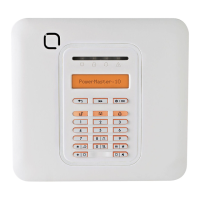
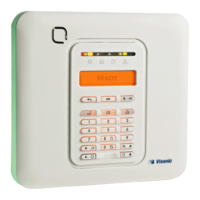
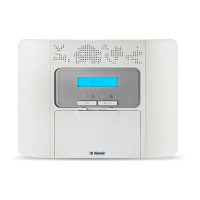


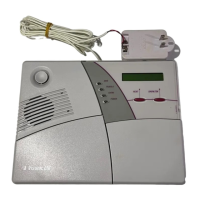
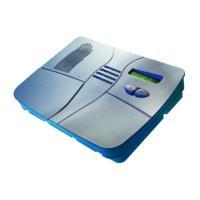
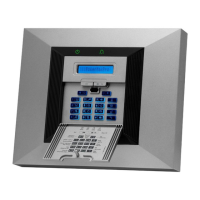
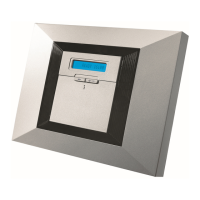
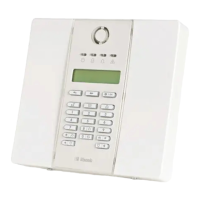


